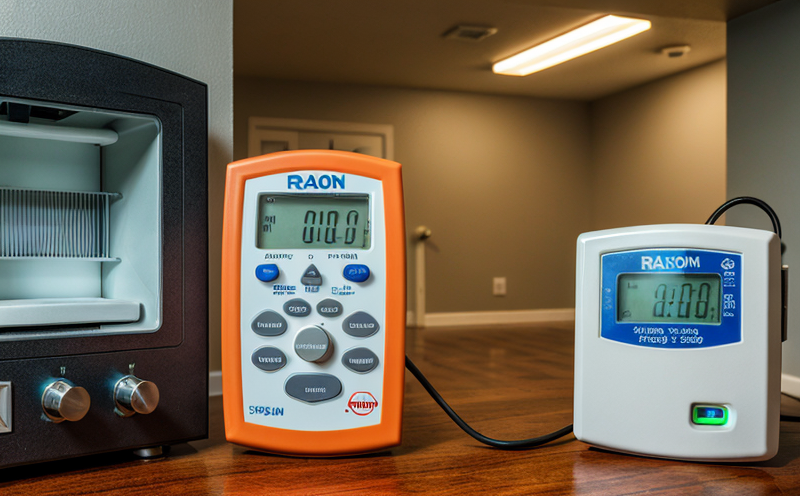ISO 11665-11 Radon Calibration and Instrument Verification
The measurement of radon in indoor environments is critical for ensuring compliance with health standards, particularly as the World Health Organization (WHO) recommends a maximum exposure level of 100 Bq/m³. The ISO 11665-11 standard provides methodologies to calibrate and verify instruments used for this purpose, ensuring reliable and accurate radon measurements.
The calibration process involves using reference sources with known radon concentrations to adjust the instrument's sensitivity and accuracy. This is crucial because even small deviations in calibration can lead to significant errors in measurement results, potentially exposing individuals to hazardous levels of radiation without their knowledge.
Instrument verification complements calibration by ensuring that instruments continue to perform within specified tolerances over time. This involves periodic checks using traceable standards and comparing the instrument's output with known reference values. Regular verification is essential for maintaining confidence in the data generated by these instruments, which can be used in various health and safety applications.
Our laboratory adheres strictly to ISO 11665-11 guidelines, ensuring that all calibrations and verifications are conducted under controlled conditions. This includes the use of state-of-the-art equipment and trained personnel who follow rigorous protocols. By doing so, we provide clients with reliable and traceable results, which are essential for regulatory compliance and informed decision-making.
For quality managers and R&D engineers, accurate radon measurements are not just a compliance requirement but also an important factor in product design and development. For example, the calibration of instruments used in indoor air quality testing can help identify potential issues early in the design process, allowing for necessary adjustments to be made before production begins.
Compliance officers rely on accurate radon measurements to ensure that their organizations meet regulatory requirements. This is particularly important for facilities that are required to monitor radon levels regularly as part of their safety protocols. By using calibrated and verified instruments, compliance officers can demonstrate due diligence in protecting the health and safety of occupants.
R&D engineers also benefit from accurate radon measurements, especially when developing new products or technologies related to indoor air quality. The ability to calibrate and verify instruments used in these applications ensures that they meet the necessary standards for accuracy and reliability. This not only enhances product performance but also contributes to advancements in technology.
For procurement professionals, ensuring that suppliers provide calibrated and verified instruments is essential for maintaining high-quality standards throughout the supply chain. By working with trusted laboratories like ours, organizations can ensure that they are receiving reliable equipment that meets international standards.
Why It Matters
The measurement of radon in indoor environments is critical for ensuring compliance with health standards, particularly as the World Health Organization (WHO) recommends a maximum exposure level of 100 Bq/m³. The ISO 11665-11 standard provides methodologies to calibrate and verify instruments used for this purpose, ensuring reliable and accurate radon measurements.
- Ensures compliance with international health standards
- Reduces the risk of exposure to harmful levels of radiation
- Enhances product design and development processes
- Supports regulatory requirements for facilities that monitor radon levels
Benefits
The benefits of ISO 11665-11 calibration and instrument verification are numerous. Firstly, it ensures that the instruments used for measuring radon in indoor environments are accurate and reliable, which is crucial for protecting public health.
Secondly, by adhering to this standard, organizations can demonstrate their commitment to maintaining high-quality standards throughout their operations. This enhances trust among stakeholders and contributes to a positive reputation.
Thirdly, the use of calibrated and verified instruments allows for more precise measurements, which can lead to better-informed decisions regarding product development and safety protocols. This ultimately results in improved outcomes and increased efficiency.
Lastly, compliance with ISO 11665-11 ensures that organizations are meeting legal requirements and avoiding potential penalties or fines associated with non-compliance. It also helps to protect the organization's reputation and maintain customer confidence.
Industry Applications
- Residential buildings for new construction and renovations
- Offices and commercial spaces
- Schools, hospitals, and other public facilities
- Laboratories and research institutions
- Industrial facilities with enclosed environments





